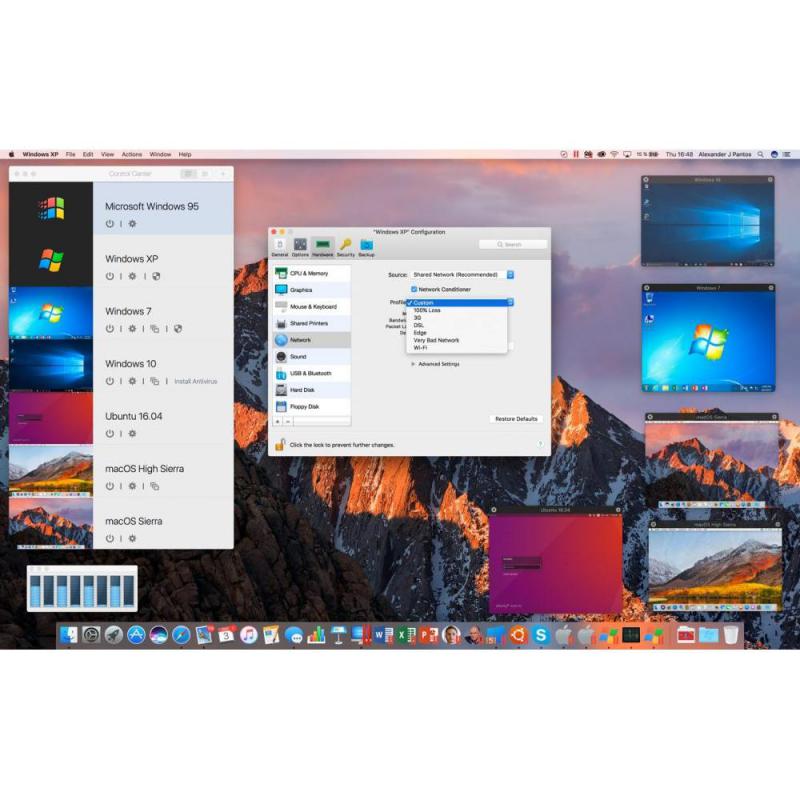
- #PARALLELS DESKTOP 13 AND RHINO HOW TO#
- #PARALLELS DESKTOP 13 AND RHINO FULL#
- #PARALLELS DESKTOP 13 AND RHINO REGISTRATION#
- #PARALLELS DESKTOP 13 AND RHINO SERIES#
These include 2 Axis Hole Pocketing, Pocketing, Profiling and 3 Axis Horizontal Roughing. On the left are the simulated operations using the ⅜” flat end mill. The Parallel Finishing operation finishes the the back belly contour. The Between 2 Curves operations perform the finishing for the upper fillets around the perimeter of the guitar body. In image (D) we see the operations contained in the ⅜” ball nose setup. The distance between the endpoints of the two curves controls the width of the tabs. This is a 2 Axis Profiling operation using two 2D curves. Of particular interest is the operation named Profile with two big tabs. The 3 Axis Horizontal Roughing operation can be clearly seen. The two back cavity operations are 2 Axis Pocketing operations located in the middle of the body.
#PARALLELS DESKTOP 13 AND RHINO REGISTRATION#
The Registration pins is a 2 Axis Hole Pocketing operation used when the stock is flipped over to machine the top side. In image (C) we see the cut material simulation after the ⅜” end mill setup. Image (B) shows the box stock highlighted over the part model. For simplicity, we have hidden the wireframe geometry. While we only show the solid model, there are actually other 2D and 3D curves derived from the model that are used for toolpath containment. It is comprised of a polysurface (solid) model. In image (A) below we see the guitar body 3D model (bottom side up) displayed in Rhino. These operations are illustrated further in the images below. The ⅜” ball nose setup contains all of the 3 Axis finishing operations comprised of three Between 2 Curves Finishing operations and one Parallel Finishing. The first mop will use 2 Axis Hole Pocketing to machine the two registration pin holes that will be used when the stock is flipped over to machine the top side. All are 2 Axis operations except for the Roughing for belly cut operation which is a 3 Axis Horizontal Roughing toolpath. The ⅜” end mill setup performs all operations that require a ⅜” end mill. The operations are divided into two setups. The complete Machining Job tree is shown here on the right. The bottom side of the guitar body is machined first.

In this case the two curves are located at the top and bottom edges of the outer perimeter fillet. In this 3 Axis strategy, the toolpath is calculated to flow between two 3D curves. To the right of the Machining Job the Toolpath Editor is displayed listing each tool motion in the 3 Axis Between 2 Curves toolpath operation. The RhinoCAM plugin is loaded and the Machining Job is displayed on the far left showing two setups, one for the 2 Axis operations and another for the 3 Axis operations. Here we see the The Stratmaster guitar body design in Rhino.
#PARALLELS DESKTOP 13 AND RHINO HOW TO#
Each student is also taught how to setup the guitar, bridge height, truss rod adjustments, setting up inclinition etc. The neck and remaining hardware are purchased items with each student completing the final assembly. More details about a typical guitar body machining are provided below.Įach student then performs hand finishing including the use of oil based stains.

Some of the body designs require 2 Axis toolpath operations only while others require additional 3 Axis roughing and finishing strategies. The stock is machined from 2 sides (top and bottom) using two ⅜” locator pins for alignment.

The stock material is either ash, spruce, or poplar measuring 13⅞” x 20⅝” x 1¾”.
#PARALLELS DESKTOP 13 AND RHINO SERIES#
The guitar bodies are designed with Rhino and machined using RhinoCAM toolpaths on the school’s Laguna iQ Desktop series 3 Axis Router. In this article we will review a typical 2-sided guitar body machining job in RhinoCAM.
#PARALLELS DESKTOP 13 AND RHINO FULL#
In this nationally acclaimed fine arts credit STEM class, students design and build their own electric guitars! Read the full case study here! We recently sat down with Anthony Prima, a teacher at OHS to discuss the class and their use of RhinoCAM in their Computer Design & Drafting class. Oskayak High School (Saskatoon, Saskatchewan, Canada) is a First Nations and Metis indigenous school focused on helping students keep their high school academic careers alive. Machining a Guitar Body with RhinoCAM and the Laguna iQ Desktop at OHS!


 0 kommentar(er)
0 kommentar(er)
